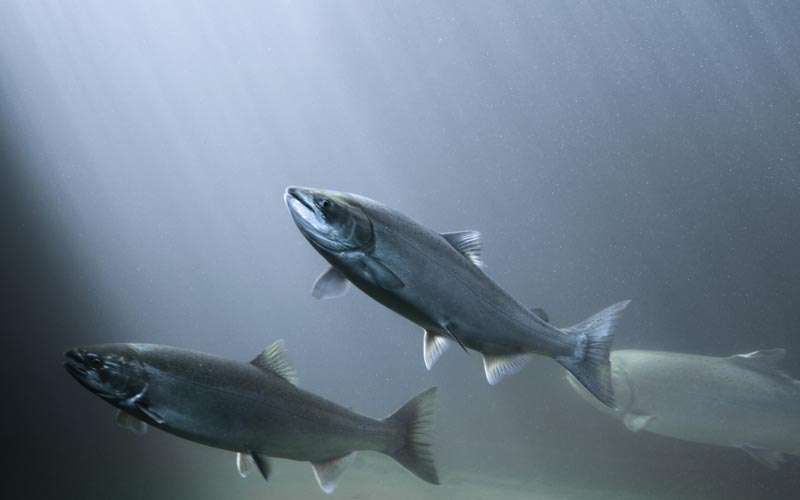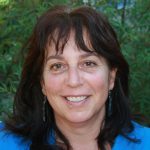
by Lisa J. Bunin, PhD, organic policy director of Center for Food Safety
That’s right. Neither wild fish nor farmed fish can be certified organic because no organic standards exist in the U.S. to regulate them. But that may be about to change—for the worse. Why? The U.S. Department of Agriculture (USDA) is currently proceeding with the development of organic aquaculture regulations that could allow wild fish and ocean-based fish farms to be certified organic.
The argument against certifying wild fish as organic is evident: Wild fish can’t be called organic because they are wild. Their behavior in the open ocean can’t be monitored or controlled like those of domesticated animals. Organic farmers feed their livestock 100 percent organic feed, as required by law, but that’s simply not possible to do for wild fish that forage and scavenge for food in the open ocean. Exposure to synthetic toxic chemicals or even radionuclides by wild fish cannot be prevented, given the presence of those toxins in the seas and ocean sediment.
When it comes to certifying farmed fish as organic, ocean-based fish farms are definitely out. As detailed in Center for Food Safety’s new report, Like Water and Oil: Ocean-Based Fish Farming and Organic Don’t Mix, fish farming in the ocean is incompatible with organic standards for the following reasons:
- Fish farms at sea pollute the marine environment. Their presence in the ocean alters oxygen levels in the vicinity of the farm, creating lifeless zones like the one the size of Connecticut in the Gulf of Mexico. Fish farms discharge pollutants, many of which sink to the ocean floor, reducing populations of bottom-dwelling plants and animals and mobilizing mercury and other toxins that have accumulated in the sediment.
- Fish farms at sea pose risks to wild species and aquatic ecosystems. Attracted by feces and uneaten and partially digested feed that flows out of farms, wild fish congregate nearby in large numbers. This not only alters their feeding behavior, but it also exposes the wild fish to diseases and parasites that breed within the confines of the fish farms. In addition, the farms attract large predators, such as sharks, seals, and seabirds, that get caught in netting or are killed by farm owners intent on preventing their farmed fish from being eaten and their nets from tearing.
- Fish farms at sea cannot prevent escapes. Escaped farmed fish harm wild fish and ecosystems through the spread of parasites and pathogens. Disease develops in the cramped sea cages and can later infect wild salmon, trout, and eels as escaped fish swimming in oceans and rivers come into contact with wild species. Our report documents 24 million reported fish escapes in two decades, demonstrating that they are both unavoidable and detrimental.
- Fish farms at sea cannot contain or control inputs and outputs. Seawater regularly flows in and out of fish farms, carrying with it unknown substances, some of which are synthetic and prohibited by law in organic production. Therefore, there’s no way to either prevent exposure of farmed fish to prohibited substances or to document fish-farm inputs and outputs in an Organic System Plan, and such plans are required of all farmers to demonstrate compliance with the organic standards to certifiers.
What about organic salmon? They’re being sold in supermarkets and restaurants across the country, so they must be authentically certified organic by the government, right? Wrong! Any fish labeled “organic” and sold in the U.S. is imported and sold here illegally. That’s because there are no standards in the U.S. that allow certified-organic fish. In any case, salmon and other migratory fish can’t be farmed organically because they possess an innate need to swim long distances and migrate between fresh and seawater. Containing them in fish farms would inhumanely curtail their natural behavior.
All of this still leaves open the question of whether fish grown in land-based aquaculture facilities can be certified organic. The jury remains out on this one. Like all land-based farms, fish farms must adhere to the principles of organic, which support the development of complex ecological systems that conserve and enhance biodiversity. They must not use toxic, synthetic inputs to prop up the system’s functions, and they must not release pollutants into the environment. Lower trophic-level fish in the food web, such as tilapia or even shrimp, could possibly be farmed organically in land-based, closed-loop recirculating systems, but that has yet to be demonstrated.
So, where do we go from here? Although the USDA is poised to allow wild and ocean-farmed fish to be certified organic, the new information contained in Center for Food Safety’s report makes a compelling case that they can never truly qualify as organic. To allow either to be called organic puts the entire organics industry in jeopardy by weakening the integrity of the USDA organic label.
So how do you choose the most sustainable seafood? Choose local seafood whenever possible, and always choose domestic over imported. Eat small fish, such as sardines, which are known to contain fewer toxic chemicals. Choose wild fish over farmed. Eat a variety of seafood types to help ease the pressure on over-popular choices. Favor fish caught by hook and line, handline, troll (not to be confused with destructive “trawl” fishing), jig, or speargun. Join a Community-Supported Fishery (CSF). A CSF follows the same model as community-supported agriculture, or a CSA, in providing local seafood directly to consumers—an excellent choice if you live in a coastal state. CSFs significantly shorten the distance seafood travels between where it was caught and where it’s consumed; they encourage fishers to use less-destructive fishing methods; and they distribute highly abundant stocks and bycatch that would otherwise be discarded by industrialized fisheries.
And please join Center for Food Safety and sign our petition urging USDA to withdraw all plans to allow ocean-based fish farms and wild fish to be certified “organic” in its aquaculture regulations.
 As organic policy director with the national public-interest organization Center for Food Safety, Lisa J. Bunin’s work focuses on curbing the proliferation of harmful food-production technologies by promoting organic and sustainable agriculture and by challenging policies and practices that compromise organic integrity. Bunin holds a PhD in environmental sociology and is board president of the Ecological Farming Association. She also serves on the National Organic Coalition’s executive committee. Her research and advocacy span several decades and continents. She has served as an NGO delegate to the United Nations’ convention on ocean dumping, has taught college courses on environmental policy and social movements, and regularly writes critical analyses on organic policy matters.
As organic policy director with the national public-interest organization Center for Food Safety, Lisa J. Bunin’s work focuses on curbing the proliferation of harmful food-production technologies by promoting organic and sustainable agriculture and by challenging policies and practices that compromise organic integrity. Bunin holds a PhD in environmental sociology and is board president of the Ecological Farming Association. She also serves on the National Organic Coalition’s executive committee. Her research and advocacy span several decades and continents. She has served as an NGO delegate to the United Nations’ convention on ocean dumping, has taught college courses on environmental policy and social movements, and regularly writes critical analyses on organic policy matters.




Thanks for sharing this information. Here’s another great example of how buying local or simply finding out about where your food comes from is as important as certification and labels. Unfortunately, our food system (and many other systems) has become so convoluted that transparency is impossible and those who make the money want it that way. Let’s keep the small, local economies going, folks. It’s our only chance to know what we eat, drink and wear and even how we heat and light our homes, not to mention making sure that the people that produce what we need are making a fair living.
It just amazes me how people who want to make lots of money will do anything toward that goal, even making our food so bad we can’t eat it, and treating our fish, cattle, pigs, etc. like they are here on earth just to make these selfish people money!! I wish all those folks who destroy our water, air, land and food for their own profit would have to eat, drink, breathe ONLY the stuff they have ruined. Maybe then they would learn to love the earth and its wonderful creatures and see more value in them and in the people of our world then they now see only in money. Thank you Lisa, for all the hard work you are doing for all us!!
The Marine Stewardship Council has a great sustainability certification label, it is a blue circle with a white check-mark that says MSC Certified inside of it – look for it at the grocery store!
The Seafood Watch Guide is also great – you can print one out and put it in your wallet, or there is an app for your iPhone!
Nature created abundant population of salmon that graze oceans eating plankton and small crustaceans, so these sockeye, humpies (pinks) and chums (silverbrites, dogs) are caught with nets. They do not consume small fish and rarely bite on hooks. Premium Copper River kings and sockeyes are caught excusively with gillnets. The abundant sockeye returning to Bristol Bay, Ak. (54 million predicted for the 2015 summer season) are exclusively caught with gillnets. Biologists and fisheries managers utilize gear appropriate for different species so it’s important to support those small scale fisheries and communities dependent on marketing their sustainably caught wild seafoods, so they can have the financial stability to resist short term, dirty extractive industries coming into their watersheds and coastal areas, like open pit mining, oil, coal and gas drilling and transport.